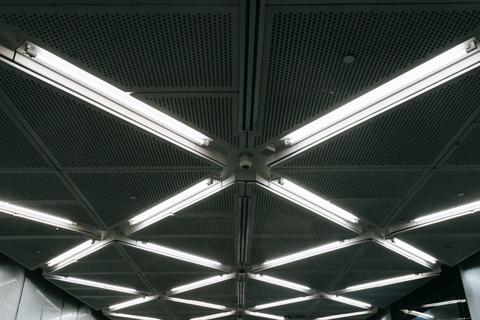
When Babak Nikoobakht arrived at Georgia Tech to begin his PhD studies, he knew the field of research he wanted to devote his academic focus. Babak worked in the field of physical chemistry on optical properties of metallic nanoparticles and their self-assemblies. After graduating, he was accepted into a National Research Council (NRC) fellowship program for post-doctoral research. The NRC fellowship led him to NIST in 2002 where he started exploring semiconductor zinc oxide nanowires at the laboratory that later became the Material Measurement Laboratory (MML).
As Babak was beginning his research at NIST, it was during a time when there was a lot of interest in nanowires for photonic applications. Photonics is the science behind the generation and manipulation of light. Soon, Babak’s colleagues and he discovered a novel approach for surface-directed growth of semiconductor nanowires, which became a quintessential tool for fabrication of nanowire-based devices. While engaged in this research, they discovered a growth method for nanofins, which are light sources built from long, thin zinc oxide strands. That was key in the next step of their research for fin light emitting diodes (LED). LEDs are semiconductor devices that emit light when an electric current passes through them. Light emanates from the device when electron-hole pairs are injected into the semiconductor material.
By creating nanofin LEDs, They were able to show that the fin shape can significantly improve the LED quantum efficiency and increase overall brightness of the light. It was also shown that the fin shape resulted in elimination of the efficiency droop, which is when the brightness of an LED starts dropping off at a point even as the electric current is continuously increased.
This research became the backbone of Babak’s NIST career. One day, while he was talking with Robin Bunch of the Technology Partnerships Office (TPO) at NIST, she mentioned the FedTech Startup Studio Program as a possible opportunity to showcase his research. This program pairs federal researchers with entrepreneurs and business mentors to collaborate to create possible startup companies around federal technologies. This sounded like a great idea to Babak to be able to work with external partners to strategize viable commercial opportunities for his technology.
Babak quickly grew interested in signing up for this program so that he could work with industry and various stakeholders to brainstorm possible applications and products of his technology for tech transfer and measurement systems in the U.S. When an invention is created in Babak’s lab, he always wants to see it gain traction toward commercialization and is open to the different avenues to achieve that goal.
FedTech was interested in one of Babak’s NIST patents and approached him for the program. He accepted and it was off to the races. Babak immediately began working with a team of entrepreneurs and business mentors. He started by discussing, in-depth, the advantages and disadvantages of his technology and broke down its potential. The entrepreneurs paid close attention and started thinking about commercial applications and market opportunities. The business mentors provided a lot of knowledge on topics ranging from customer pain points to limitations of the current technologies.
Working with a team and watching them plan out how to possibly commercialize Babak’s technology was a great experience for him. The team clicked well together and the program gave them further motivation to develop the technology, fueling them to push it out and publicize it so that it didn’t end up sitting on a shelf.
The team came up with a possible commercial application to demonstrate a series of bright ultra-violet (UV) LED pixels that emit light in the 270nm to 330nm range. This range resides directly in the wavelength where disinfection and purification can be done through the UV light. This is right on par with what the market is looking for as companies seek to greater sanitize and disinfect surfaces and areas where people frequent.
“My biggest takeaway from the program was how great everyone was to work with. The business mentors created these excellent plans that helped guide the collaborative process and called attention to aspects of the business that we needed to discuss and the entrepreneurs were diligent and open to any pathway we could tackle to get to the market,” said Babak.
Babak enjoyed the collaborative process of the private and public sector coming together to achieve a common goal in technology transfer and he encourages any federal researcher with a patent or commercially viable technology to participate in the program.

